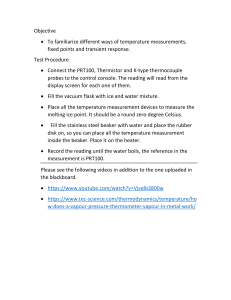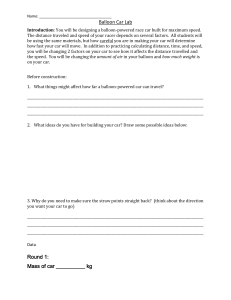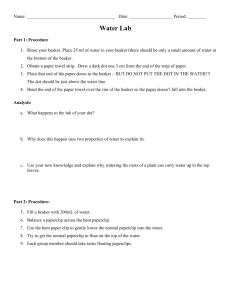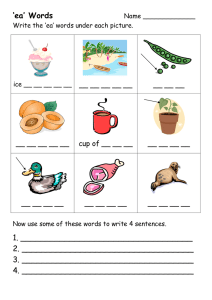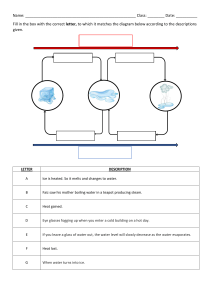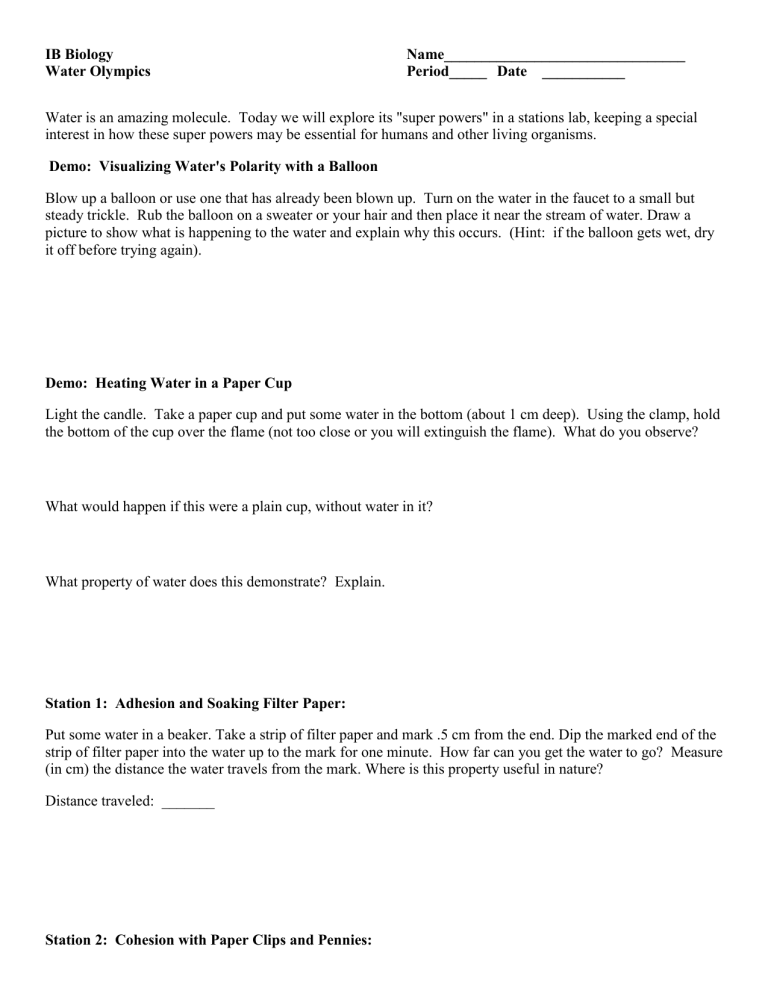
IB Biology Water Olympics Name________________________________ Period_____ Date ___________ Water is an amazing molecule. Today we will explore its "super powers" in a stations lab, keeping a special interest in how these super powers may be essential for humans and other living organisms. Demo: Visualizing Water's Polarity with a Balloon Blow up a balloon or use one that has already been blown up. Turn on the water in the faucet to a small but steady trickle. Rub the balloon on a sweater or your hair and then place it near the stream of water. Draw a picture to show what is happening to the water and explain why this occurs. (Hint: if the balloon gets wet, dry it off before trying again). Demo: Heating Water in a Paper Cup Light the candle. Take a paper cup and put some water in the bottom (about 1 cm deep). Using the clamp, hold the bottom of the cup over the flame (not too close or you will extinguish the flame). What do you observe? What would happen if this were a plain cup, without water in it? What property of water does this demonstrate? Explain. Station 1: Adhesion and Soaking Filter Paper: Put some water in a beaker. Take a strip of filter paper and mark .5 cm from the end. Dip the marked end of the strip of filter paper into the water up to the mark for one minute. How far can you get the water to go? Measure (in cm) the distance the water travels from the mark. Where is this property useful in nature? Distance traveled: _______ Station 2: Cohesion with Paper Clips and Pennies: a) Paperclips: fill a beaker to the very top with water and then slowly and carefully "launch" a paperclip onto the surface. You may need to try several times. Try both sizes of paperclip. How long can you get the paperclip to stay afloat? Explain how this property of water is essential for life. Record time:________ (While you are waiting, move on to the second part of this station below.) b) Drops on Pennies: Use a pipette to get as many drops on a penny as possible. Does it make a difference what side of the penny you use? Where do you see this phenomenon in nature? Your record:________ Station 3: Evaporative Cooling and Thermometers Record the initial temperature of a thermometer. Check it against others to make sure that it has returned to room temperature. Now wrap some paper towel around the bulb of the thermometer and secure with a rubber band. Dip the paper towel in the room temperature water in the beaker, take it out of the water, and wave it to speed evaporation. Watch the temperature. What is the lowest temperature? What property of water does this demonstrate? How is this property of water important to humans and other organisms? Initial Temp:______ Final Temp:_______ Station 4: Building "Ice" Crystals with Water Models Use the magnetic water models to simulate how water connects via Hydrogen Bonding. Use the models to simulate an ice crystal (remember that snowflakes are 6-sided). Draw the ice crystal showing the oxygens (red) and the hydrogens (white). What special property of water does this lead to? Why is it important to life on Earth?
